Werewolves. Werwölfe. Loup-garou. Varulv. Versipellis. Lupinotuum. Lykanthrōpos. A bestial creation. Half-man, half-wolf. Described as a shapeshifter, a ferocious beast that preys on mankind, a beast that rests in the dark woods, and a creature that becomes feral at full moon.
Mankind has feared these “wolf-mans” for thousands of years, yet documentations on these bloodthirsty beasts are sparse and deemed unreliable as new evidence emerges, pushing back the origins of these beasts further back.
What was assumed for werewolves to make their first appearance in the epic poem The Epic of Gilgamesh by the 600 B.C. Babylonian author Sin-Leqi-Unninni, was overruled when scholars discovered that werewolves appeared as early as 700 B.C..
Ancient Greek poet Hesiod, Greek traveler and geographer Pausanias, Hellenistic Greek tragic poet and grammarian Lycophron, and Roman poet Publius Ovidius Naso (or as the English know him: Ovid), have stated that Lycaon, a king of Arcadia, had killed his son Nyctimus and have served his son to the god of the sky Zeus, in which Zeus transformed Lycaon into a wolf.
This frightening idea of “lycanthropy” has also been spotted even in the Hebrew Bible, specifically with Nebuchadnezzar II, the second king of the Neo-Babylonian Empire. In Daniel 4, it documents how this psychiatric syndrome befell on the great king which occurs after Nebuchadnezzar II fails to heed Daniel’s warning of avoiding his egoistic pride declaring he was in control of everything. As stated in Daniel 4:25-33, “‘King Nebuchadnezzar, to you it is spoken: the kingdom has departed from you!/And they shall drive you from men,/and your dwelling shall be with the beasts of the field’.../his hair had grown like eagles’ feathers and his nails like birds’ claws”.
There were other accounts of werewolfism and lycanthropy. Appearing in Nordic folklore, the Saga of the Volsungs journeys the story of a father and a son who find wolf pelt that have the power to change people into wolves for ten days. The father-son pair take the pelts, transform into wolves, and go on a killing rampage.
All of these folklore, legends, myths, and stories would spin into a twisted tale of fifteenth- and sixteenth-century horror.
In 1521, Frenchmen Pierre Burgot and Michel Verdun claimed their sworn allegiance with the devil and said they had an ointment that allowed them to shift from man to wolf. After confessing to savagely murdering several children, both were burned at the stake, as it was believed burning was one of the few ways to kill a werewolf.
Giles Garnier, known as the “Werewolf of Dole” was another sixteenth-century Frenchman who, like Burgot and Verdun before him, had an ointment allowing wolf-shifting transformations. As said by legend, in his wolf form, he had cruelly killed children and feasted on them. He too was burned at the stake.
Then, there was the most infamous werewolf of them all: Peter Stubbe, a wealthy, late sixteenth-century farmer in Bedburg, Germany.
The town of Bedburg, Germany was terrorized by a hellish beast that murdered its cattles and abducted women and children. The townspeople feared they were being hunted by a Hell demon, or perhaps a bloodcraving werewolf.
Peter Stubbe (also Peter Stube, Peeter Stubbe, Peter Stübbe, Peter Stumpf, and the aliases Abel Griswold, Abil Griswold, and Ubel Griswold) was a wealthy farmer in a rural community of Bedburg, Germany. He was a widower and fathered two young children. Despite having respect and influence on others because of his wealth, Stubbe had darker intentions.
Farmers of Bedburg were dumbfounded for years due to the strange deaths of their cows. Their cattle would be found dead and ripped apart, so farmers believed it to be wolves. They didn’t know this was the start of Stubbe’s unnatural compulsion to mutilate and kill.
As children began vanishing from their homes and young women disappeared from paths they traveled daily; as people turned up dead, horribly mutilated, there were those who were never found. Farmers began arming themselves, thinking that wolves have gone savage; then, there were those who pressed into the idea of werewolves. A man who would walk in daylight unnoticed and by night became a feral monster.
When Stubbe was found guilty of his crimes, he revealed how he committed these murders. He said at twelve, the devil himself gave him a magic belt of wolf fur, and when he donned the fur, he transformed into “the likeness of a…devouring wolf, strong and mighty”. With the belt off, he became human once more.
He was responsible for the deaths of thirteen children, two pregnant women, and numerous livestock, however, these weren’t a simple coldblood kill. With the pregnant women, Stubbe admitted he ripped the fetuses from their mothers’ wombs and “ate their hearts panting hot and raw”. Young children were strangled, bludgeoned, and throats torn open with his bare hands, many disemboweled and partially eaten.
On October 28, 1589, Stubbe was found guilty, and his execution was horrific: body strapped on a large wheel, with red-hot pincers, his executioners pulled his flesh from his bones in various places. His arms and legs were hacked off with a large ax, as well as his head.
However, all of this raised a question amongst scholars: were some of these werewolves mentally ill, under the influence of a psychedelic drug, or were cold-blooded killers? Scholars then continued searching and stumbled upon a logical reasoning, that perhaps the werewolf phenomenon may have a medical explanation.
Peter the Wild Boy was found in 1725. He was wandering clothless on all four, running through the German forest. Many speculated he was a werewolf or raised by wolves. Peter ate with his hands and couldn’t speak. Research found that Peter likely had Pitt-Hopkins syndrome, which was a condition discovered in 1978. This syndrome causes lack of speech, seizures, distinct facial features, difficulty breathing, and intellectual challenges.
There were other medical conditions that may have encouraged the werewolf-mania throughout history such as lycanthropy (rare, psychological condition that caused people to believe they’re changing into a wolf or other animal), food poisoning, hypertrichosis (rare, genetic disorder causing excessive hair growth), rabies, and hallucinations (perhaps caused by hallucinogenic herbs).
Then, if there was a medical reasoning for werewolfism and lycanthropy, what explained the full moon ideology?
A study conducted at Australia’s Calvary Mater Newcastle hospital had discovered that the full moon brings out a “beast” in many humans. The study found that of the ninety-one violent behavior incidents between August 2008 and July 2009, twenty-three percent occurred during a full moon, many patients displaying wolf-like behaviors. But what caused this?
There is a geophysics explanation, that the moon has an exosphere that is covered in volcanic dust and when it has micrometeorite impacts, releases small outbursts of gas powered by trapped decaying radioactive material, even electrostatic forces. The moon has a thin electrified shell, so one ionosphere. Earth has an ionosphere too, but because of its magnetic field and prominent atmosphere, it’s significantly stronger than the moon’s. Yet: the moon’s electric shell can be washed away by the sun’s solar wind, and during a full moon, humans are hidden from this as the Earth’s ionosphere fizzles. With this being said, it’s the idea of invisible plasma of the lunar ionosphere (neon, helium, argon, oxygen, carbon, sodium, potassium, and molecule hydrogen) that affects individuals to go lunatic (hence, the word “luna” meaning moon in feminine Latin) during a full moon.
With all this in mind, let’s move onto werewolf mating.
There are three types of rankings when it comes to mating: Alphas, Betas, and Omegas. Alphas can either be dominant (the highest ranking, aggressive, protective, strong ruts) or recessive (not-so strong ruts). Ruts are an Alphas’ version of a heat, except during their rut, they are highly aggressive and dominant. This can trigger a heat in an Omega. Alphas can be either male or female, yet Alpha females have a retractable member and are wombless. Alphas’ pheromones are strong and heavy, and are powerful enough to induce heats in Omegas, and their pheromones can cause a human to go into a “drunken” state. Alphas can mate with either Betas or Omegas.
Betas are the Hybrids. With kemonomimi features, they don’t possess a strong pheromone compared to the Alphas or even the Omegas, yet their sense of smell, despite being weaker than an Alpha or Omega, is still significantly stronger compared to humans. Their pheromone, however, can still affect humans, which, similarly to an Alpha’s pheromone on a human, can make the human feel “drunk” or “high”. It is rare for a Beta male to impregnate a female Omega, or for a Beta female to become pregnant by an Alpha male. Beta females have a regular cycle, and by chance, could possibly get pregnant by an Alpha, Beta, or human male, but the chances are slim. Betas could Mark a human, rarely an Omega, through a similar process with an Alpha Marking a human. They have to bite between the shoulder and neck and the human has to willingly let the Beta in. A Mark between a Beta and a human can be semi-permanent; it can be destroyed by an Alpha claiming the human or if the Bind is not reMarked every two years.
Omegas, like Alphas, can be dominant (can produce young) or recessive (unlikely to produce young). Like Alphas, Omegas can be either male or female, yet for Omega males, they have somewhat female reproductive organs yet made within the anal cavity. Omegas have heat, and when they are under their heat, they experience irritation, high sexual arousal, labored breathing, high body temperature, and so forth. When Omegas are in heat, they need to be close to a mated Alpha or stay indoors until their heat passes or an Alpha will take advantage of them.
Finally, the Binding or Marking. This is where an Alpha and an Omega bite between the neck and shoulder. However, when it comes to an Alpha and a human, all the Alpha has to do is bite the human between the neck and shoulder, and the human has to willingly let the Alpha in (meaning the human has to be relaxed).
This form of Binding between human and Alpha werewolves are rare, since most humans avoid the werewolves, or are simply not willing to give up. After all, a Bind is forever—permanent. And once bound, there is no way to escape it.

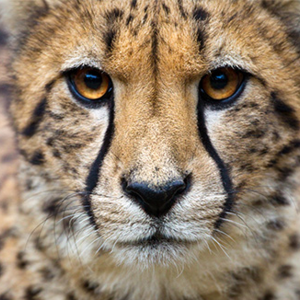


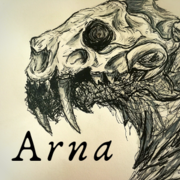
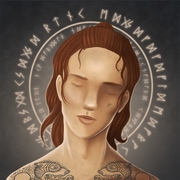



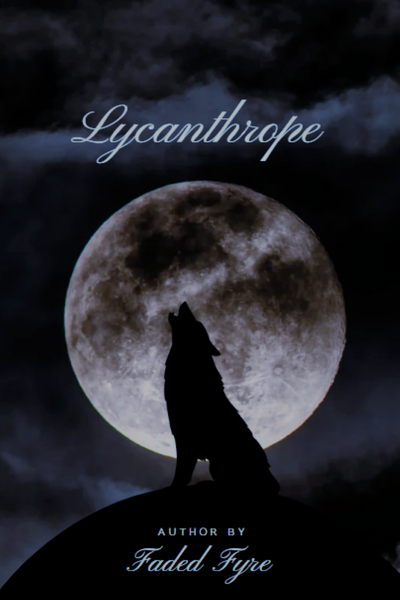
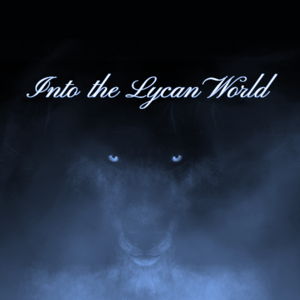
Comments (0)
See all